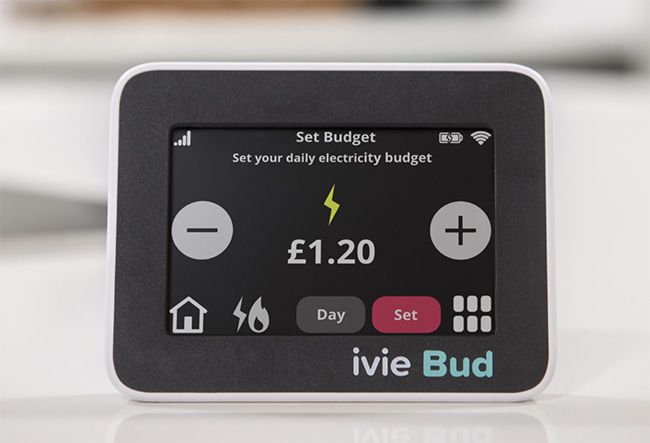Energy bills have increased and we're all on the hunt for easy solutions to keep prices as low as possible. Could smart devices and energy-saving gadgets help? So many devices are sold as "energy-saving" these days, but are they worth it? Which ones are actually worth buying?
We spoke to Lucy Joss from the Insights team at Energy Saving Trust, to find out the gadgets worth buying, as well as more top tips for saving money on electricity and gas bills.
Best energy-saving devices at a glance
- Energy Monitor: Decdeal Power Energy Monitor
- Energy Saving light bulbs: Argos Home 9.6W LED BC Light Bulb
- Smart Radiator Thermostat: Tado Smart Radiator Thermostat 3-pack
- Smart Heating Thermostat: Google Nest Learning Thermostat
- Infrared Heating Panel: ENERJ Infrared Electric panel heater
- Draught excluder: Nicola Spring draft excluder (set of 2)
- Radiator Heat Reflector: Yuzet Radiator Heat Reflective Insulating Foil
“Many devices and appliances are marketed as having “smart” or “energy saving” features," said Lucy. "So when comparing models, it’s important to pay attention to the product description and energy label if available.
“When buying a new large appliance such as a fridge or washing machine, the energy label is a very useful guide to help you choose the most energy-efficient model. Appliances are tested for how much energy they use during typical use and given a rating on a scale of A to G, with A being the most efficient and G being the least efficient. For example, choosing a A-rated fridge freezer over a F-rated unit of the same size will save you about £580 on your energy bills over the lifetime of the product, as well as 610kg of carbon dioxide emissions - the same as flying from London to Lisbon and back.
“When buying other devices, it’s important to distinguish between a device with energy-saving features - such as a smart kettle which only boils the amount of water you need - and a device with other smart features - such as smart lights or smart speakers with voice activation or the ability to control from your phone. These other smart features may make the device more convenient to use but won’t necessarily help you save energy. This is because their features often rely on the device being left on standby, for example, to pick up voice activation or scheduling signals. These smart devices might be using several times as much electricity in standby mode compared to a non-smart equivalent.”
How we chose the best energy-saving devices:
- Expert opinion: Energy Saving Trust's Lucy Joss gave us the lowdown on the best devices for saving money on energy bills and what to consider when buying them
- Trusted brands and reviews: We included tried and tested devices loved by the HELLO! testers team, and where it wasn't possible to test the devices ourselves, we only included devices that had a high volume of positive reviews from
- Price: We included devices with a competitive price point, without sacrificing on quality. Consider that whatever you spend, you'll make back over time by the savings you make on your energy bills.
Energy Monitors / Smart Meters
"Energy monitors and smart meters both let you see how much energy you are using and how you are using it, which helps you manage your energy consumption and reduce your bills," says Lucy "Smart meters also give your energy supplier accurate readings of the energy you use, meaning they do not have to rely on estimates. In addition, having a smart meter could allow you to take part in schemes, which let you save money on your energy bills by reducing your energy usage at specific times, such as the National Grid ESO’s Demand Flexibility Service which is set to return this winter and will pay households to use less energy at peak times. Look out for updates from your supplier about how you can get involved."
Our pick: Decdeal Power Energy Monitor
The Decdeal Power Energy Monitor has a large, easy-to-read LCD screen which can display time, watt, cost, cumulative electrical quantity, voltage, frequency, current, power factor, minimum power, maximum power and price. When the current load power goes beyond the max. load power, the letters OVERLOAD on the LCD screen will keep blinking to remind you. Handily, any saved data will be stored in the memory if the batteries run out, so you won't lose any info between battery changes.
Real-time energy tracker: ivie Bud
ivie Bud is an in-home display that connects with your smart meter and shows exactly how much energy you’re using in real-time. It helps you to easily track, compare and adjust how you use energy. It's not compatible with all models, however, so check (via the link on their site) before ordering.
Energy Saving light bulbs
An energy-saving LED light bulb is often the first gadget people think of when trying to cut down their energy output, as it is affordable, and easy to achieve. Shoppers can buy dimmable designs, as well as various lights, from warm white, to a cooler white light, depending on your preference. Lucy says: "If you replace all the bulbs in your home with LED lights, you could save around £60 a year on your energy bills and reduce your carbon dioxide emissions by up to 50kg a year - the same as flying from Cardiff to Dublin."
Our pick: Argos Home 9.6W LED BC Light Bulb
These great 9-watt bulbs have no warm-up time, and they boast up to 25 years of life. They’re energy efficiency class E and are bayonet cap fitting. 100% of verified Argos shoppers recommend them and they have a 4.9 out of 5 star rating, which is pretty near perfect!
Smart Radiator Thermostat
A radiator thermostat is essential to tailor how hot your radiators heat up to, but a smart thermostat is the latest must-have. This innovative device enables you to control multiple radiators, and zones, all of which can be managed via an app. It also details the energy output and temperature, so you can be mindful of how hot your house is - and whether you really need the heating on.
Lucy says: "Smart heating controls are an example of a smart technology that helps you save energy and money. They have features that go beyond conventional heating controls to help you heat your home in an optimal way. For example, some systems will adjust your heating timings and boiler flow temperature based on the weather, while others are designed to learn your habits and adjust controls to match. By making sure your heating is only switched on when and where it’s needed, smart heating controls can reduce the amount of energy your heating system uses and save you money on your energy bills."
Our pick: Tado Smart radiator Thermostat 3 pack
With over 3700 positive ratings and an impressive 4.6 out of five-star rating at Amazon, the Tado Smart Radiator Thermostat is one of the online shopping portal’s most popular. Use it with Alexa to control you radiators with a range of features: advanced Geofencing, Weather adaptation, statistics, energy savings report, multi-room control (additional smart radiator thermostats required), heating boost function, frost, and child protection.
Smart Heating Thermostat
Savvy shoppers may have stocked up on radiator thermostats, but you may also need a thermostat for the home, which are often found in the hallway or communal areas, and work to control the heating instead of individual radiators. Considering your thermostat controls 60% of your energy bill, this is a smart device we believe every homeowner should have.
You can auto-schedule your heating to come on, be turned up or down, it modulated the efficiency of your boiler, but also has a feature to heat your home to your preferred temperature - even if you’re not home yet.
Our pick: Google Nest Learning Thermostat
Google’s Nest thermostat can be controlled from your phone or laptop, and it gets to know the temperature you like to have when you’re at home. When you’re away it turns the temperature down and gets to know how your home warms up or how draughty it is - it’ll only use the energy you need. A good investment since your thermostat controls 60% of your energy bill!
Infrared Heating Panel
An infrared heating panel is an ideal purchase for those looking to reduce their energy bills, but also look for a cost-effective way to heat up your home.
This design works to raise the ambient temperature in the room to warm up your home at a lower cost. They can be mounted on the wall or ceiling and are perfect for small rooms, offices or the kitchen and living space.
Our pick: ENERJ Infrared Electric panel heater
Enerj’s Infrared Electric panel heater measures 59.5 x 119.5 cm and can be mounted on a wall or ceiling or even kept free-standing. It’s totally noise free and the company states it’s up to 70% less costyl than traditional heating systems.
Draught excluder
There's nothing worse than feeling a draught down your neck, or in the room, at any time of year, especially in the winter. Not only can that slight gust of wind creeping in give us a chill, and a stiff neck at times, but it also means we are letting out heat, which means we have to keep our heating on for longer to counter the draught. Simple solution - a draught excluder.
Lucy says: "Reducing heat loss throughout your home is one of the best ways to keep warm whilst using less heating. If you only need to heat some of the rooms in your home, keeping internal doors closed and using a draught excluder is an easy way to keep the heat in these rooms. If you’re heating the whole house, use a draught excluder at the bottom of external doors."
Our pick: Nicola Spring draft excluder (set of 2)
Measuring 12 x 78.5cm Wayfair’s Nicola Spring Draft Excluder is the perfect size to fit almost every doorway. It’s a dust-friendly colour that won’t show up marks and the heart details are so cute. It’s a two pack, which is a nice touch, as is the two-year warranty.
Radiator Heat Reflector
A radiator reflector has long been advised to keep your home insulated for longer, as it works to prevent any of the warm hair to be expelled through external walls, which radiators are often fitted to. It works to bounce the heat back into the room, which means you can have your heating on for less time, and consequently reducing those energy bills.
Lucy says: "Fix reflector panels behind radiators on uninsulated external walls. These panels reflect heat from the radiator back into the room, instead of letting the heat out through the external wall."
Our pick: Yuzet Radiator Heat Reflective Insulating Foil
Getting a thumbs up from over 500 Amazon customers and counting, the Yizet Radiator Heat Reflective Insulating Foil is simple to cut, which allows for a perfect fit. All you need to do is cut it to the size you want and slot it behind your radiator. You can stick it to the wall if need be with sticky tape.

















